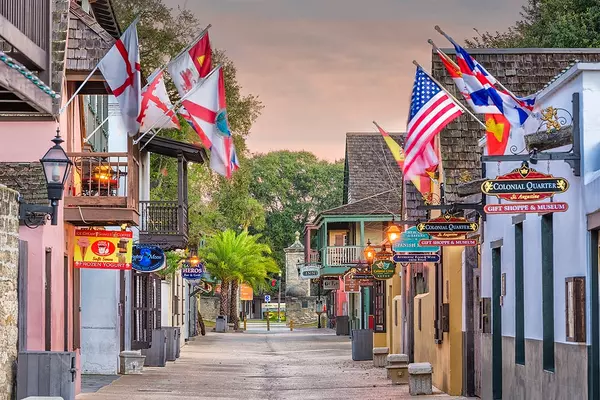Official Guide to Sea Turtle Nesting Season in St. Augustine, FL
St. Augustine, FL, is not just a haven for sun-seekers and history buffs; it's also a critical sanctuary for sea turtles during their nesting season. This period is one of nature's most extraordinary phenomena, where female sea turtles return to their birthplace to continue the cycle of life. As residents and visitors of St. Augustine, it is our privilege and duty to ensure these marvelous creatures can safely carry out their nesting rituals.
Understanding Sea Turtle Nesting Season
Time Frame
Nesting season in St. Augustine runs from May 1st through October 31st, with the bulk of nesting occurring between June and August. St. Augustine’s shores see an average of 150 nests per season.
Species
Three primary species of sea turtles grace our shores:
Leatherback (Dermochelys coriacea): The largest of all sea turtles, Leatherbacks are unique for their soft, leather-like shells.
Loggerhead (Caretta caretta): Recognizable by their large heads and robust shells, Loggerheads are the most frequent visitors.
Green (Chelonia mydas): Named for their greenish body fat, these turtles are known for their herbivorous diet.
In early April, a massive Leatherback sea turtle was seen in Crescent Beach laying her eggs in broad daylight, which is rare! Check out the incredible footage by clicking here.
Nesting Process
The nesting ritual of sea turtles is a poignant demonstration of nature's tenacity. First, the female turtle makes her way to the beach, often traveling hundreds of miles from her feeding grounds. Using her hind flippers, she digs a pit deep enough to protect her eggs from surface threats. She then lays her clutch of ping pong ball sized eggs, which can number over a hundred, in the sandy pit. After covering her eggs with sand to disguise the nest from predators, the turtle makes the exhausting trip back to the ocean. They usually lay 2 to 3 nests per season on a 2-3 year cycle. The eggs incubate in the sand for about 2 months. As the conditions have cooled inside the egg chamber, the hatchlings emerge out of the nest as a group. As the young turtles exit the nest, they instinctively seek the horizon by looking for natural light reflecting off the water.
Upon reaching the water, hatchlings begin their journey spending their first days of their lives swimming offshore. Once there, the tiny sea turtles crawl into mats of drifting algae called sargassum. They spend the first few years of their lives passively drifting on their oceanic rafts feeding on almost anything they can catch in the sargassum. After a few years, the juvenile sea turtles leave their protective nursery and move to inshore feeding grounds where they spend the rest of their pre-adult lives. Ultimately, at the age of 12 – 30, adult, female, sea turtles return to their natal beach to lay nests of their own. Estimates predict that about one in a thousand hatchlings survive to adulthood.
Local Conservation Efforts
Several organizations dedicated to marine conservation play vital roles during the nesting season, leading to a hatching success rate often above 80%:
St. Augustine Sea Turtle Patrol: Every morning during nesting season, trained sea turtle volunteers patrol the beaches looking for signs of sea turtle nesting. Each sea turtle emergence is examined and documented as a nest or false crawl (a non-nesting emergence). Each nest is marked with stakes, flagging, and, if necessary, covered with a metal screen to protect it from predators. After a nest has been marked, it is carefully monitored for signs of tidal inundation, predation, and finally hatching. After the hatchlings emerge from the nest, volunteers return to evaluate and document how many hatchlings emerged. The eggs are counted and a hatching success (the number of hatched egg shells in relation to the total number of eggs) is calculated for each nest.
Marine Rescue Center: Specialists at the center are involved in the rescue, rehabilitation, and release of injured sea turtles, as well as public education and awareness campaigns.
Guidelines for Residents and Visitors
Beach visitors can have a positive impact on nesting sea turtles by taking the following actions:
1. Use designated beach walkovers. Stay off dunes and vegetation.
2. Stay out of sand dunes and conservation zones (15 feet seaward of the dune line).
3. Fill holes and remove sandcastles at the end of your beach day.
4. Do not leave beach chairs or canopies on the beach overnight.
5. Refrain from using fireworks and open fires.
6. Refrain from releasing balloons, as they can fall into the ocean and harm marine life.
7. Reduce litter and marine debris – dispose of trash properly. Pick up any fishing line and plastic that you see and participate in beach clean-ups.
8. Never approach sea turtles emerging from or returning to the sea. Nesting females are vulnerable and timid, and can be easily frightened away.
9. Turn off east facing exterior lights if you live or are staying near the beach.
10. Do not use flashlights on the beach at night. St. Johns County prohibits the use of flashlights on the beach at night during sea turtle nesting season.
How to Safely Observe Sea Turtle Nesting
While it's crucial to keep a respectful distance from nesting turtles, guided turtle walks provide a controlled environment for witnessing this natural marvel. Conducted by conservation experts, these tours educate participants about sea turtle behavior and how to observe without causing distress.
Although it might seem helpful to guide hatchlings to the sea, doing so can disrupt their critical imprinting process necessary for their navigation and survival. If you encounter a stranded or disoriented hatchling, the best action is to contact local wildlife authorities who can provide the necessary care. If you find a sick / injured / dead sea turtle, do not put them back into the water as they may need medical attention. Please call FL Fish & Wildlife Conservation Commission’s 24-hour Wildlife Alert Number at 1-888-404-FWCC (1-888-404-3922).
How You Can Get Involved
Engagement in local conservation can take many forms, from active participation in beach clean-ups to financial support of marine protection initiatives. Every effort contributes to the sustainability of our sea turtle populations.
The awe-inspiring sight of a sea turtle making her way to the shore to lay eggs is a stark reminder of the resilience of nature and our role in its preservation. By adhering to guidelines and supporting conservation efforts, we ensure that future generations will also enjoy the privilege of witnessing these magnificent creatures.
Categories
Recent Posts











